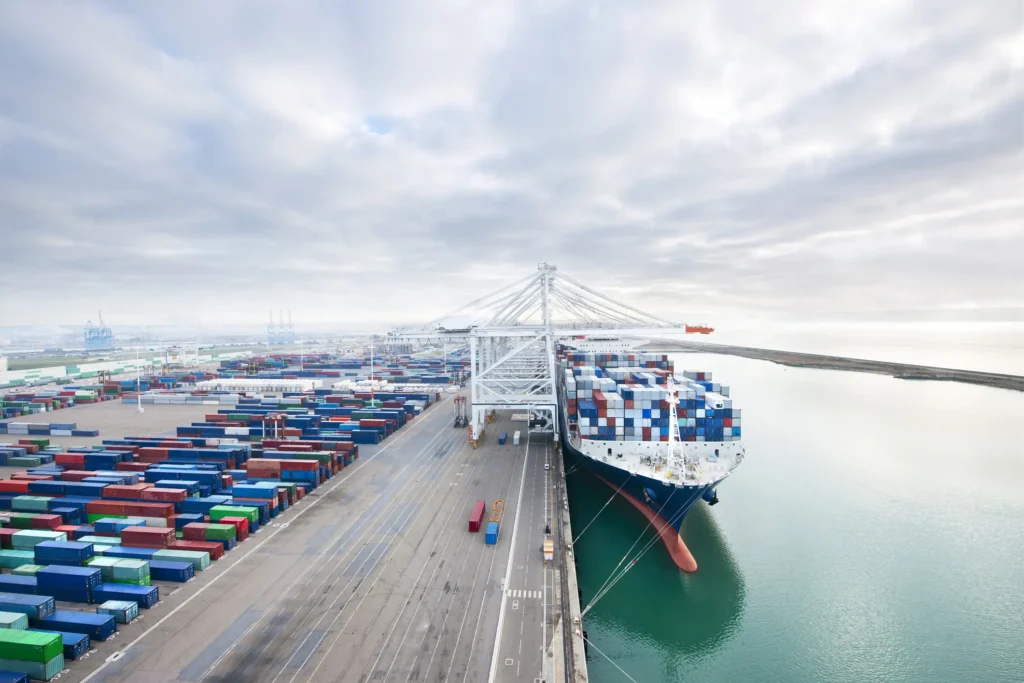Sea Freight
Our local logistics staff, as well as our global network of agents, provide superior service and affordable pricing for your sea freight forwarding. DIERA office in Warsaw specializes in organizing full container loads (FCL) and less than container loads (LCL). Along with marine freight forwarding, we provide full customs services. Upon request, we provide cargo insurance during sea transport.

What is sea freight?
Sea freight is merely the transport of goods by sea aboard specialized vessels known as freighters (or cargo ships). The definition has evolved over time. Initially, it referred only to the cost of shipments, but the concept has since broadened to include the full shipping procedure as well as additional services. The freight rate is determined by the cargo's volume and weight. The final price for shipping goods varies according to each order and is determined by factors such as the nature of the transport and the amount of space available on the ship.
Sea freight includes both full container load (FCL) and less than container load (LCL). Oversized cargo or dangerous goods can also be transported by ship. If not in bulk, an extra charge will apply for not taking up the entire volume of the cargo ship. You can share a cargo ship with other shippers. The distance to the delivery destination should also be taken into consideration. The cost of sea freight from China to Poland will differ from that in Europe. We will advise you on the best option, taking into consideration both specific laws in the country concerned and your unique needs.

Sea freight with DIERA
We are always willing to help our clients and will readily discuss any sea freight-related issues.
We will strive to provide you as much information as possible on the rates and logistics of maritime transport, particularly sea freight from China. We will recommend the best transportation options in commercial contracts, letters of credit, agreements, and the terms and conditions of delivery. We offer expertise, experience and proficiency in terms of maritime freight. We operate globally; therefore, we are also ready to confront the challenges of sea freight from China. Despite strong competition in the logistics sector, we are renowned for our flexible solutions and excellent customer service. We welcome you to collaborate with an experienced organisation in the field of short and long-distance maritime transport!
What operations does sea freight involve?
Sea freight is more than just waterborne transport of goods; it also includes all the necessary paperwork. International regulations must be considered together with national legislation and local requirements. Our freight forwarders, for example, check transit documents before they are submitted for customs clearance. They also organise loading and unloading of ships, freight consignment preparation, storage, arrangement of transfer to/from the cargo ship and cargo insurance. They choose the best freight route, which may include a combination of transport by sea, rail, and road.
Advantages of Sea Transport
The most significant advantage of sea transport versus air, rail, or road freight is cost-effectiveness. This is the most cost-effective method of transporting goods across long distances. It offers the lowest cost per unit of goods transported. Ships are very spacious and are capable of carrying huge amounts of bulk cargo and LCL, as well as oversized goods. Cargo ships (freighters) transport containers with typical volume of tens of cubic meters and capacity of several tonnes, some even up to 200 tonnes. Other modes of transport do not allow for such large-scale operations. Specialized carriers can convey liquid, dry, or gaseous raw materials.
Seaways provide access to specific continents and major economic areas across the world. It is the most cost-effective option for covering lengthy distances, such as maritime transport from China to Poland. Next to air freight, it is one of the safer options. The goods must comply with multiple legal standards and be appropriately secured. Specific platforms and containers are frequently used in maritime transport, allowing goods that require special handling or have no standard dimensions to travel over long distances.